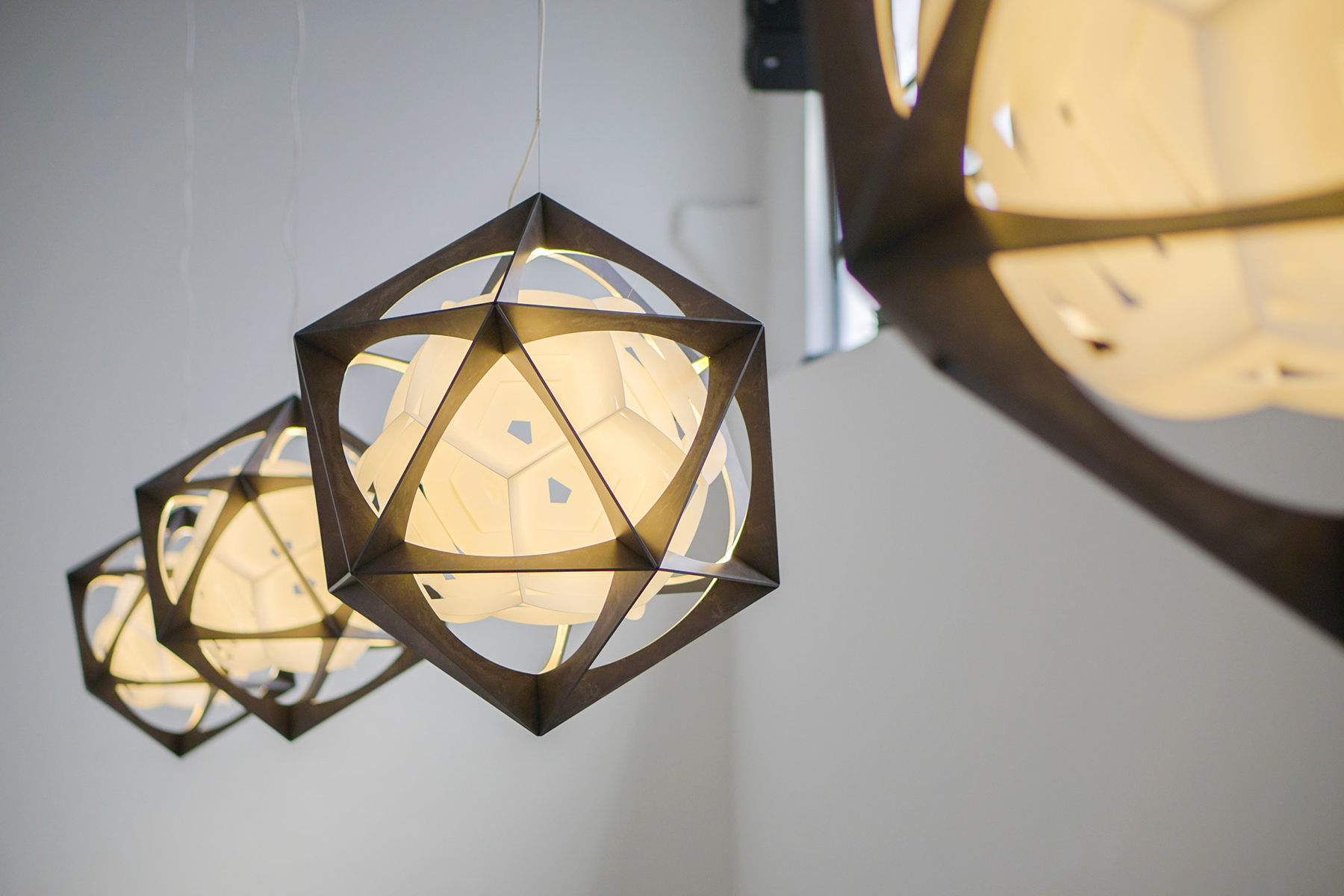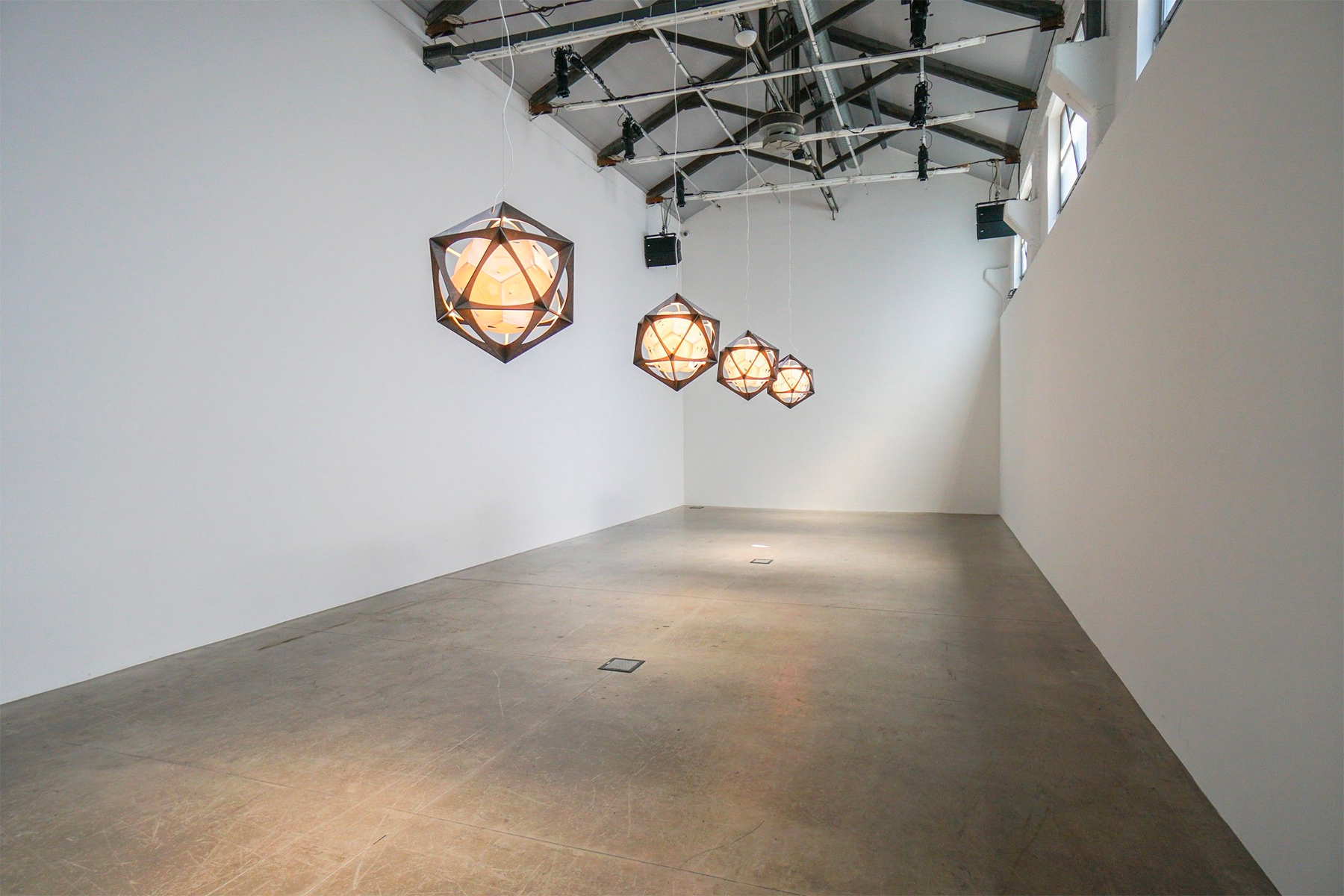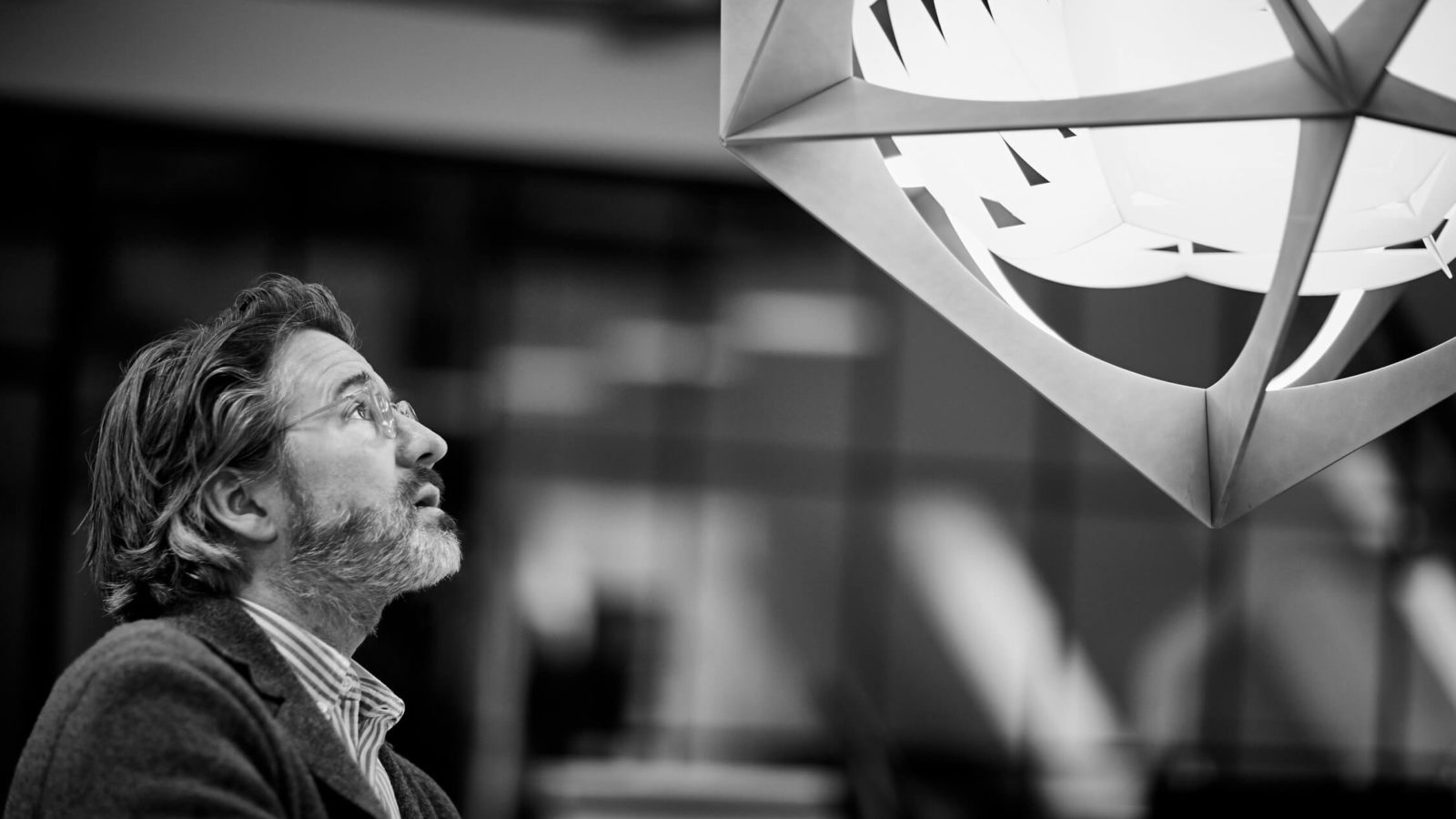Anyone familiar with Icelandic artist Olafur Eliasson’s body of work understands the investigations of light and geometry he and his Berlin-based studio undertake. A desire to create alternatives to what he calls the dominant orthogonal thinking of modern architecture and art, while crafting new forms that help counteract the numbing of senses in these times of globalization and heedless consumption, fuel his work.
“The planet has been dehumanized,” he says, “and my designs subscribe to the necessity of re-humanizing space.” It’s a topic we discuss at length at Salone del Mobile in Milan, where he debuted his first lighting fixture, OE Quasi, for Danish legacy brand Louis Poulsen.
In Eliasson’s quest to make space more hospitable for humanity, Louis Poulsen has turned out to be an ideal partner. “Fundamentally, art is about enabling people to articulate something they didn’t consciously know they wanted to say,” he says. “It’s not about telling—it’s listening to people.” It’s a belief that—in harmony with Danish design principles of uplifting living spaces with a sense of warmth—has underscored Louis Poulsen’s ethos for well over a century. Indeed, Eliasson fondly recalls growing up with the brand’s lamps in his native Iceland. “It’s possible for good design to support this notion of feeling respected, included, and valued.”
At first glance, the OE Quasi’s contours are its defining features. Two complex geometric shapes nestle within each other to mimic a sphere. The outer layer, a rigid aluminum icosahedron (20 faces and 12 vertices), cages a levitating dodecahedron (12 faces and 20 vertices). But don’t be overwhelmed by the technicalities. Its complexity grants a certain majesty—the fixture’s matrix of radiant LEDs takes on different forms depending on where the observer stands, creating endless permutations and resonances.
Eliasson designed the fixture with longevity and sustainability in mind: Its aluminum is 90 percent recycled, while other materials enable easy disassembly for replacing and recycling parts. His mission is to minimize waste at a time when gratuitous trash, particularly plastic, is choking waterways and landfills. The concern is top of mind for Eliasson, who recently traversed Greenland’s waters and installed 30 slowly melting ice blocks at the Tate as a comment on climate change.
Our conversation pivots to the future of domestic living. In Eliasson’s eyes, the same logic that makes co-working spaces so successful will quickly encroach upon the private residence, which he predicts will become much less private. Think the communal lounge spaces of college dorms, but far less institutional. “How will we live together in the future?” he asks. “I’m carefully following what constitutes a more sustainable way of coexisting on earth.” The planet’s future—and the fate of generations to come—is at stake. He admits to constantly thinking about what “constitutes a good life, a quality life,” and used years of insight to help inform OE Quasi. “Great design enables people to feel that they’ve been listened to,” he says. With this fixture, he seems to have achieved that.



